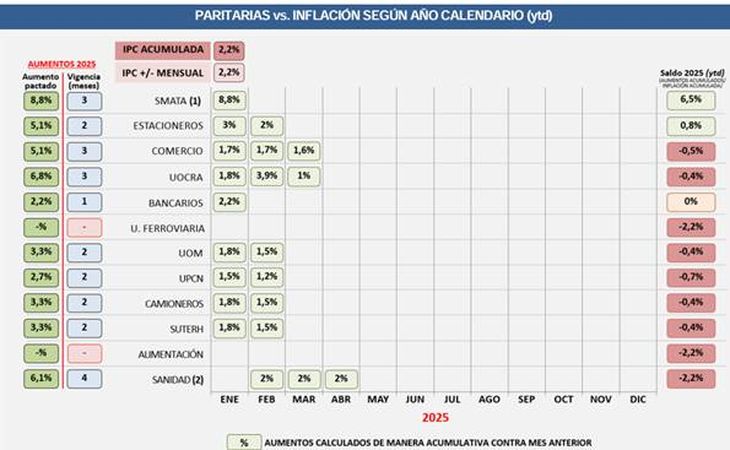In February last year, when the price index was 13.2%, the salary agreements (projected to one year) came to touch the highest peak of adjustment speed reaching 234% annualized, according to the records of the consultant he directs Lucas Romero.
On the contrary, The annual dynamics of average joint increases was in February of this year in 27.3%, the lowest level of the entire series initiated in January 2021.
However, they continue to predominate Short agreements, 3 and 4 monthsthat They tend to approach inflation: 27.3%are quite similar to the variation of the January consumer price index (2.2%) that annualized reaches 29.8%.
Image (2) .png
Synopsis source
Brake
The report realizes that, being salaries an essential part of the economy’s price dynamics, and in its attempt to continue deflating the prices of the economy, the national government continues to press on the parity process for Achieve salary agreements that are close to the official pattern Inflation target was set at 1% monthly.
Cites as an example, in this sense, what happened in the joint negotiation of the Health Union. In November 2024, the Federation of Workers of the Argentine Health (FATSA), agreed with the chambers of the sector a salary increase of 11.4% for the October-December period. This increase exceeded the salary pattern established by the Ministry of Economy, and the Ministry of Labor refused to approve the agreement. Before the lack of approval, Fatsa and business chambers resumed negotiations in February 2025, and reached a new salary agreement for the quarter February-April with a total increase of 5.2% that remains to be homologated.
It is considered that The resistance to homologating agreements that are well above the pattern is the tool that the government has been using to domesticate the parity process. While the adjustments are still far from the official pattern of 1%, The speed of the agreements is quite in line with the price speed, which runs around 2% monthly or even in some agreements it is belowas results from the last agreements achieved by large unions.
Image (3) .png

Synopsis source
The monthly average of salary increases in the joint agreements has been systematically falling since Synopsis bears this record In August last year, when it was 4.4% monthly while last February it was 2.1%.
A downward trend is observed, which seems to want to emulate the same bearish path of the prices of the economy. But the report also warns that “That slowdown in salary increases can end the stage of salary recovery, which already start running in parallel at the same speed as monthly inflation.”
Image (4) .png

Synopsis source
For now, and except exceptions, last January most of the great guilds were lagging behind their salary increases in relation to the increase in the index of the beginning of the year (2.2%).
Image (5) .png

Synopsis source
Source: Ambito




